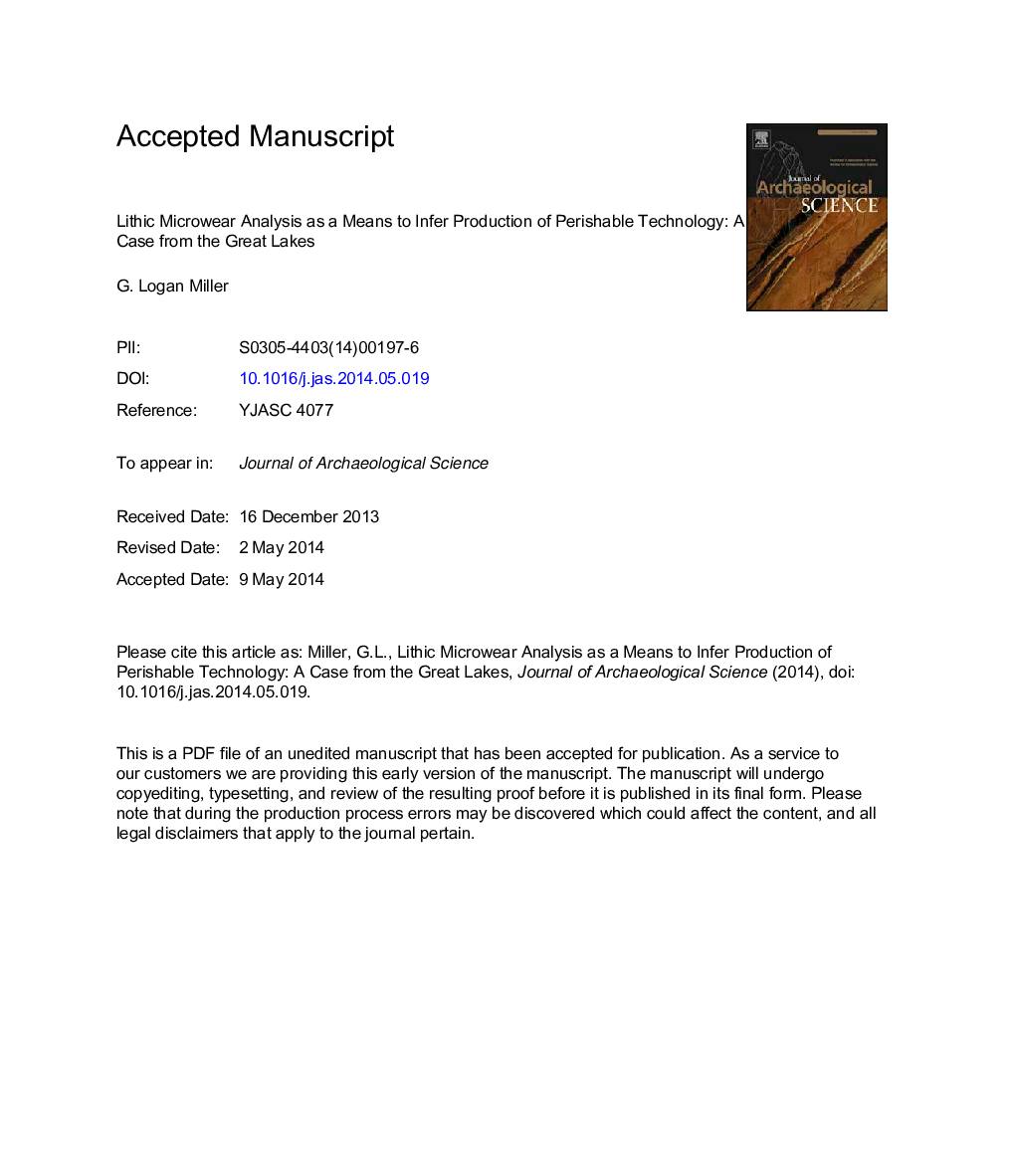| کد مقاله | کد نشریه | سال انتشار | مقاله انگلیسی | نسخه تمام متن |
|---|---|---|---|---|
| 7443027 | 1483911 | 2014 | 36 صفحه PDF | دانلود رایگان |
عنوان انگلیسی مقاله ISI
Lithic microwear analysis as a means to infer production of perishable technology: a case from the Great Lakes
دانلود مقاله + سفارش ترجمه
دانلود مقاله ISI انگلیسی
رایگان برای ایرانیان
موضوعات مرتبط
مهندسی و علوم پایه
مهندسی مواد
دانش مواد (عمومی)
پیش نمایش صفحه اول مقاله

چکیده انگلیسی
Perishable technologies form a major portion of hunter-gatherer toolkits across the globe. Due to preservation issues, however, these artifacts are often not recovered in the archaeological record. Thus it is necessary to look for evidence of perishable technologies in novel ways. This is especially true for Late Pleistocene sites in North America which are typically dominated by chipped stone artifacts. While other perishable technologies-i.e. bone and wood-from these sites have received some attention, fiber technologies remain under examined due to their near complete absence in the archaeological record, especially in eastern North America. Lithic microwear analysis on a sample of artifacts from the Clovis affiliated Paleo Crossing site in the Great Lakes region of North America indicates that numerous artifacts were used for plant processing. I present the results of analysis here with particular emphasis on artifacts used to process plant material. Through comparison with experimentally produced wear patterns, I argue that much of the plant processing at Paleo Crossing was geared toward plant fiber production. These findings provide further evidence that fiber technologies were important elements of the Clovis toolkit. Additionally, it demonstrates that evidence of perishable technologies can be recovered from lithic assemblages.
ناشر
Database: Elsevier - ScienceDirect (ساینس دایرکت)
Journal: Journal of Archaeological Science - Volume 49, September 2014, Pages 292-301
Journal: Journal of Archaeological Science - Volume 49, September 2014, Pages 292-301
نویسندگان
G. Logan Miller,